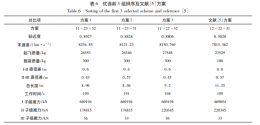DF26/27 is the Chinese version of the MGM-134A Midgetman ICBM.Whoever wrote that piece was probably salivating on the prospect of B-21s launching JASSM-ERs and TELs stationed in Japan and the Philippines launching LRHWs towards the DF-26 bases located in China's interior with impunity - Before suddenly realizing that those DF-26s are somehow already mated with nuclear warheads, and that doing so could result in a nuclear exchange with China, blah blah blah.
To be honest, I find it to be quite rare to see people on the Chinese internet space and Chinese social media talking about how China's MRBMs and IRBMs will be nuclear-capable. All the talks about DF-17s, DF-26s and DF-27s I see mainly revolve around how to sink US carriers, other warships and strike at US bases in the Pacific, with little to nada mention about arming those missiles with nukes.
In the meantime, the only times I see nukes being mentioned a lot are when the discussion/reporting are mainly about China's ICBMs, i.e. DF-5, DF-31AG, DF-41, JL-2 and JL-3.
So, I have no idea why these defense-watching people in the West always like to hype up the nuke threat from China, as if China's about to use nukes once the war breaks out in the WestPac.
Self-projection and 做贼心虚 are hard-to-die habits, I suppose.
DF26/27 has an oversized third stage (integrated) warhead. This third stage may weigh 2.4t
It can accommodate 1.6t of liquid fuel (more than 10 years ago, I posted a document screenshot on the CD forum). Equipped with a liquid engine with 3000N-5000N thrust.
There are discussions on Chinese forums, but Chinese military fans consciously don't say much about strategic nuclear weapons.
DF26/27 third-level continuous work information is hard to find in Chinese literature.
But if you pay attention to the jumping trajectory, that is, the literature of multiple intermittent firings to achieve multiple trajectory jumps (the warhead can do a large angle of yaw). You can find a lot of information.
The third stage of DF26 can achieve at least 2-3 ignitions, making the trajectory completely unpredictable.


